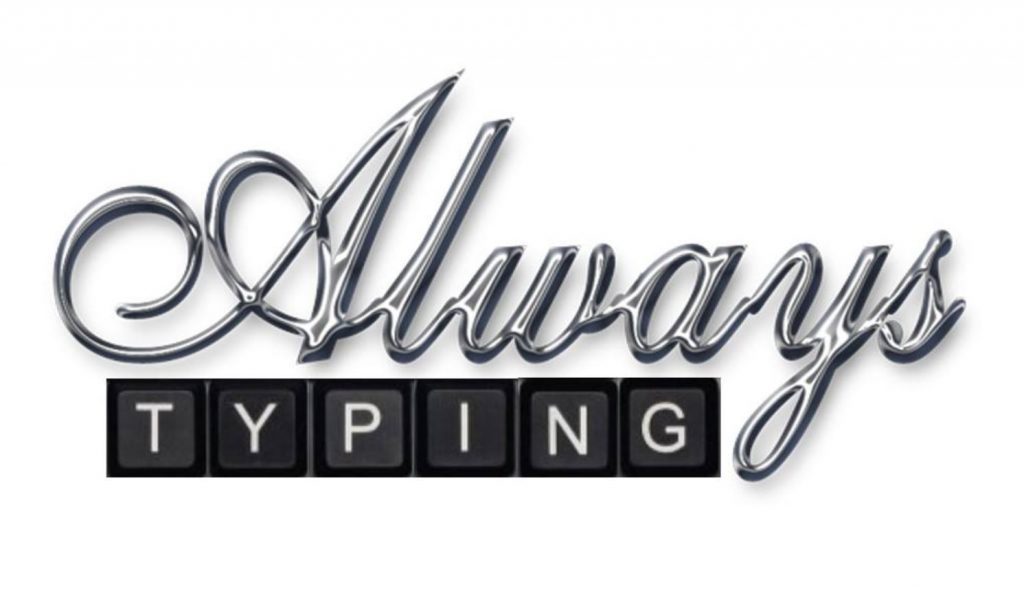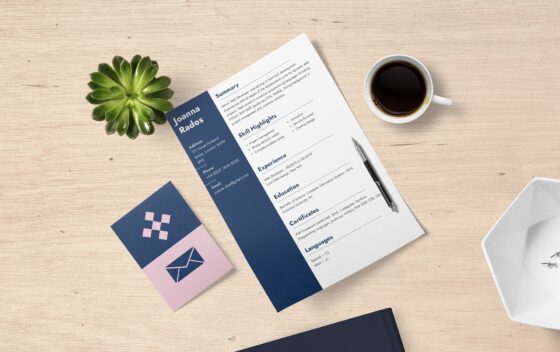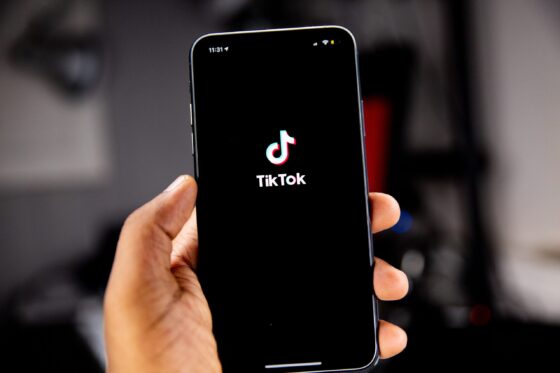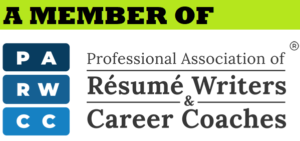The jobseeker pool is vast, and the average hiring manager only spends around 60 seconds reviewing a resume before they decide to read it. Are you currently trekking through the job market? Then, you are keenly aware that most of today’s interviews are landed using an online medium. If you plan to email your resume, you need a subject line that will grab the recruiter’s or hiring manager’s attention quickly. The last thing any job candidate would want is to have their resume sitting in an inbox unread because the recruiter didn’t even bother to open it. This is why it is important to be aware of the best subject lines to use when emailing your resume. Fortunately, there are a few guidelines you can follow so your email will stand out. Let’s review the best email subject lines to use to help your resume get distinguished from the rest. Guidelines for the best email subject line Maybe you’re asking yourself what is so important about a subject line when your resume is full of the vital information that recruiters need to surmise your qualifications. The subject line for resume email attachments is the first thing a recruiter is going to notice amongst the data lingering in their inbox. Therefore it needs to make a lasting impression. It’s your introduction, your chance to capture the reader’s attention. It’s also how to avoid your email resume becoming another remnant in the spam folder. Be Professional Remember, you’re applying for a job. Recruiters won’t respond to emails with subject lines that are too familiar. While being friendly isn’t necessarily a bad thing, using laid-back language instead of sounding like a professional is not a good idea. It will negatively impact the chances of getting your email read, much less acquiring the interview you desire. You also want to keep a professional email address. It’s also a part of the introduction process. Recruiters are more likely to assume that “jennybaxter” is more professional than someone using an email that starts with “dogowner99”. It’s great that you love dogs. But, it won’t help you come across as a qualified candidate. If you don’t already have a professional email, go ahead and make a new one. There are plenty of free email accounts out there, like Gmail for instance. Just keep it simple. First name and last name or initial and last name using whichever email platform you choose. You could also include a nod to your career such as “jbaxterwriter” as an efficient choice for career purposes. Keep it Brief Make sure to keep your subject line short and to the point. There’s only a certain amount of characters allowed, typically around 50 or 60 per most email services. If you’ve made your subject line too long, then the intended receiver won’t even be able to view it. Remember the goal is to catch their eye quickly. Did you know that over a billion and a half people check their email on a mobile device? Different devices can limit even more of the viewing data available to mobile users. This means you want to capture the recruiter’s attention within the first 20 characters or so. List the most crucial details right away, so your subject line will hold their gaze and encourage them to continue with the rest of your email resume. Try to avoid using any soft skill keywords in the subject line, remember recruiters don’t want to feel like they’re being peddled a new product. They want candid facts that are going to help them make an informed decision about a potential candidate. The easier you make the process for hiring managers, the faster your resume will come across their radar. Follow directions It’s always important to check if any job openings that you are applying for have any specific requirements that are listed when submitting a resume. Details matter. Some employment opportunities may require certain attributes regarding the open position that should be listed in the subject line. Keep in mind, specifics are often employed to help filter emails to the proper channels. In particular, things such as position name, job location, position ID#, and candidate name as applicable. Here is an example of a subject line with those requirements: “Sound Engineer, Nashville, Job ID# 8321, Jane Doe.” Additionally, you may be required to enclose certain files within your email aside from your resume, such as a cover letter and portfolio. Referral Referrals can help candidates establish a sense of trust with a recruiter. If someone has referred you to the company, make sure to include their name in the subject line of your email. Here is an example of a subject line that includes a job referral: “Referral from Robert Frost: John Smith, Resume for Consumer Relations Expert.” Employee referral programs will offer an incentive to the employee for referring candidates to open positions within the company. This will help solidify your credibility with the recruiter. Proofread Make certain to proofread and edit your email subject line before sending it through. You don’t want a misplaced comma, forgotten period, or random typo to prevent your email from being accessed. Keep that first impression on a positive note! In Closing The subject line of your email is your chance to fascinate the job recruiter in less than a few seconds. Keep it short, but always professional. Make sure to follow any instructions listed in the job opening, so that you can secure your future career! If you have any reservations about your current resume retaining the recruiter’s interest once they’ve moved past your subject line, Always Typing Resumes has got your back! Contact Us Today
The Good And Bad Of Applying For Multiple Jobs At One Company
An average of 62% of job seekers get at least one interview by their tenth application. While you’re searching for your new career, you may find yourself viewing various opportunities at one company and conclude that the more jobs you apply for, the more chances you’ll have to get hired. So, should you apply to multiple jobs at the same company? The short answer is that it is okay to do so. There are certain benefits to applying to the same company. However, you can’t simply throw your resume at all of the positions they have and hope something sticks. Read the job descriptions and apply to the different roles only if you’re qualified. Benefits As with anything in life, there are pros and cons to applying to multiple positions within the same company. Let’s talk about the benefits. Company Size Larger companies have different departments and a bigger array of hiring managers. This means there are more opportunities for you to get your resume seen. However, each time you apply for a new position, it is important that every cover letter and resume is tailored toward that specific position. If the company is smaller, the hiring manager may be the same person for each open position. It’s not unheard of for a hiring manager at a small company to interview someone and ask the candidate if they’re interested in another role. Exposure If you are applying for one position in particular, then that can limit your resume’s exposure to other hiring managers. Often, they don’t communicate with each other. This is especially true at larger companies. Each hiring manager is responsible for filling the roles within their department. Which means they only see the resumes that come in for their own positions. This makes submitting more than one application/resume a great idea. You will be seen by more hiring managers within the company. Again, it is imperative to only apply to those roles that you’re qualified for. Contact Connecting with the recruiter will establish your interest as valid and allow you the opportunity to explain why you are submitting a resume for more than one position. This will ensure you are noticed for both your eagerness and resourcefulness. In some cases, you may need to reach out to the human resources department and make them aware of your interest. Be sure to explain what makes you feel qualified for each position that you apply for. Don’t be afraid to ask questions. You can also use your cover letter to discuss the reasons why you are applying to multiple roles. Perhaps the company is your dream company–the cover letter is a perfect place to indicate that. Disadvantages If done properly, applying to multiple roles within a single company can net some great benefits. There have even been stories about someone accepting a position and then hearing from a hiring manager in a different department months later. On the other hand, there can be some major disadvantages to applying for multiple roles within one company. Wrong Impression Hiring managers may assume that you are applying to any and everything when they see that you’ve submitted multiple applications at the same time. Employers need to know that you are focused on your career, and not just on getting whatever is available. It’s important that it doesn’t seem like you’re wasting anyone’s time. You don’t want anyone to mistake motivation for desperation. When you’ve answered “yes” to should I apply for multiple jobs at the same company, tell them why. It’s also worth considering that aside from the hiring managers’ objective to fill an open position, it is also their objective to remove candidates from their list of potentials. If you apply for multiple positions in the same company, it’s best to limit them to two or three. Can Cause Doubt The last thing that you want to do is have a future employer doubt your intent. When you’re applying to more than one job opportunity within the same company, it can appear as though you’re indecisive and don’t even know what you want to do. They want to be assured of your commitment. They may also infer that you are insecure about your capabilities. If they think that you need to take time to figure out what it is you’re good at, they can lose interest, especially if it’s not an entry-level opportunity. Make sure that your resume extols your skills for each job that interests you so there can be no uncertainty about your qualifications. Singular job offers Some companies will only make a singular job offer. If you’re applying for multiple career opportunities, you could miss out on the job opportunity you truly wanted. Recruiters can access your profile, and they will research any previous interactions before making an offer. By applying to the roles that you are truly qualified for, you will increase your chances of getting a job offer that is right for you and right for the company. Key takeaways People rarely meet all the qualifications of a particular job; however, if you know how to do what the company wants you to do, then it is okay to apply for more than one role at the same company. Always read the job description thoroughly before applying to a new role. Remember to explain some of your reasoning in the cover letter and try to network or connect with the hiring manager and recruiter. When you find that you meet the qualifications of multiple roles, it’s time to get your resume ready. You’ll need a document that gets past the Applicant Tracking System and impresses the hiring manager. Always Typing Resumes has been helping clients do this for years. It would be a great honor to be a part of your career journey, too. Contact Us Today
Secure More Interviews With a Professional Resume Outline
A professionally written resume boosts your earning potential by 7%. When you think about the fact that most hiring managers spend less than 10 seconds scanning a resume, you realize the importance of having a professional resume. There are ways to make your resume professional without hiring a professional resume writer. In this article, we’ll cover what a professional resume outline is and why you should always use it to develop your career documents. Don’t let your resume be one of the ones that are tossed aside after three seconds. Learn more now: What Is a Professional Resume Outline? A professional resume outline is a skeleton or sections of your resume that must be filled with your unique career history. These sections are vital to passing both ATS and hiring manager scans. Some resumes are shorter and only have five sections, but others have many more. It all depends on your career target, history, and industry. Why Is It Important? First of all, nearly 95% of Fortune 500 companies use some form of an ATS. These automatic scans will reject your document if it doesn’t follow the correct format or have the right information. When you have a professional resume outline and include all relevant information, you’re one step closer to getting your resume to a human being. And secondly, you want your resume to be as professional as possible so it stands up against competitors. That’s why following an outline and including the information we’ll highlight below is a must if you want your resume to be taken seriously. Which Format Should You Use? There are three popular formats we recommend for your resume. The first is the most common and it is the reverse-chronological resume. It highlights your experience starting with your current role and working backward for 10-15 years. However, some high-level managers or those with career gaps may benefit from a hybrid or combination resume. These formats focus more on the skills and accomplishments you have rather than the professional experience. And finally, there is the functional resume. This format is probably the least common and least liked by hiring managers. It is good to use when you are changing careers and need to highlight transferable skills for the new path. We do not recommend using the functional format except in special circumstances. What To Include In the Basic Resume Outline: Now that we’ve explained what the outline is and why it’s important, we’re going to cover what to include in it. The following are the vital elements that every resume must have. We cannot stress enough how important it is to include these sections. Contact Information Summary Skills/Competencies Professional Experience Education and Credentials If you have the space and information to include, you can also have additional sections. These may include: Publications Professional memberships Awards and honors Board membership Volunteer experience Patents Technical proficiencies Speaking engagements Articles submitted to peer reviews or books Conferences attended or invited to It’s vital you remember to keep the resume to two pages. Three pages are okay in some instances, but resume best practices says to stick to two as much as possible. If you have room on the document after you have the basics, you can consider including any of the extras. Resume Outline Examples: Below, we’ll pull information from one of our example resumes so you can see which section contains what information. Keep reading to learn more: Contact Information First Last City, State Zip | (111) 222-3333 | email@email.com You want the contact information to be front and center at the very top of the first page. You should include your first and last name, location, phone number, and email. You can also include a link to a portfolio or LinkedIn profile if those are applicable to the jobs you are targeting. A hiring manager can’t contact you without this first section. Additionally, Applicant Tracking Systems (ATS) could kick your resume out of the system if it doesn’t find contact information. Summary Title that Mirrors Job Description Optimistic and energetic Business Leader with extensive experience managing stores, creating and executing new processes and procedures, building self-sufficient teams, and revamping operational roadmaps with a positive impact on profitability. Champions an environment of equality and inclusion for all staff members by building an atmosphere of acceptance, mutual respect, innovation, and cultural awareness. Consistently achieve business continuity by establishing productive business relationships and resolving critical human capital issues. Bilingual proficiency in English and German. The above is an example summary to showcase on your resume. It should be between 3-5 sentences that describe your strengths and attributes. The summary is placed at the very top of the resume under your name and the heading of the resume. The heading is the title of your current job or the role you are applying for. Skills/Competencies Core Competencies Customer Service | Operational Strategies | Sales | New Hire Training | Team Leadership | Conflict Resolution | Documentation & Reporting | Recruiting Strategies | Interviewing Techniques | Performance Reviews | Resource Planning | Program Management | Business & Regulatory Compliance Your skills list is one of the most important parts of the resume. You want to make sure these align with the keywords in the job description you are applying for. This will help you pass through the ATS and get in front of a recruiter. You’ll place the skills section directly below the summary. These two sections should only take up about one-third of the first page, but no more than half of the page. Your Work History Section Professional Experience Name of Store Store Manager | 2007 to Present Manage and direct daily operations by analyzing market trends, responding to shifting priorities of consumers, and implementing talent retention initiatives through improved employee engagement and training that fostered a strong team morale and improved productivity. Successfully sourced new candidates and scheduled interviews based on successful pre-screen. Coach and mentor employees on administrative procedures, company policies, and performance standards by turning inefficiencies into opportunities for improvement
How to Handle a Part-Time Job on a Resume
As of August 2022, over 25 million people held part-time jobs. When searching for a new job, many people wonder how to include a part-time job on a resume. Some wonder if including it is even necessary. The answer to both of those questions is more complicated than a direct yes or no. This article will answer these questions once and for all! Keep reading to discover more about how to put a part-time job on your resume. Should You Include a Part-Time Job on a Resume? In short, it depends. If it helps you to meet your job goal, then it should definitely be included. If it is an on-the-side job that doesn’t offer much value to your career history, then you may want to leave it off. Answering the following questions will help you make the best decision: Does It Align With Your Job Goal? If the part-time role showcases the skills and has solid accomplishments to help you get your next role, you have to include it. You do not have to say that it is a part-time role when developing it. Just proceed as you do with the other roles in the professional experience section. Does It Add Value? Adding a position is also a must if it adds value to your job target. For example, let’s say you are trying to get into an entry-level sales role. And your experience is working at a camp for children during summer breaks in college. You would want to include this because it can highlight a few key skills that would help in sales, including: Many times, adding a part-time role can show valuable skills that transfer across many different types of positions. So, if there is room on the resume and you can show the role professionally, adding it is probably a good idea. Will It Create a Gap to Remove it? Another important consideration is if removing the job will create a gap in your resume. If removing the part-time job creates a gap in your work history that exceeds a few months, it’s a bad idea to remove it. Gaps on the resume are a major concern and red flag for a lot of hiring managers, so it’s better to have a little something rather than nothing. In the following section, we’ll describe what sections you must have when writing a resume with part-time roles. Part-Time Resume Template The resume template for someone with part-time roles is exactly like the one for professionals with full-time roles. The following outline will ensure your resume has all of the vital elements: Contact Information At the very top of the resume, you need to include your contact information. This will include: You must include this information so recruiters can contact you. And it needs to be easily noticeable so they know exactly who to get in touch with and how to do so. Summary Directly following your contact information is a short summary highlighting your strengths and attributes. It should only be about 3-5 lines and should focus on the abilities you bring to an organization. You’ll want to customize this section and the next based on the job description you are submitting a resume. Areas of Expertise The areas of expertise section should be 9-15 skills that are directly related to the job applying for. Many formats have these in bulleted form across 2-3 columns. You want to make sure these skills align with the language from the job description to pass through the ATS. Professional Experience The professional experience should include the following about all roles (full- and part-time): Some jobs will have more achievements than others and that is okay. You want to focus on including the most relevant and eye-catching information in this section so hiring managers want to connect with you. Education and Credentials At the end of the resume, you’ll include your education, training, and other related credentials. This should be a short section that encompasses your professional training and education. What To Do If You Have Held Several Part-Time Jobs Sometimes, people have several part-time jobs that are very similar in nature. These roles even overlap on occasion. If you have job roles that have the same title and same duties, it is okay to combine them. This will make your resume have fewer jobs listed so you don’t look like a job hopper. It also cuts down on repetitiveness which is a big deal with most resumes. The hiring manager does not need to read the same information over and over again. Combining similar roles makes sure you don’t have this issue. Contact Us Today to Get a Resume Update! Now you understand how to handle a part-time job on a resume. We hope this article helped you to develop your career documents! However, if you are still unsure of how to proceed or need assistance, check out our packages today to learn more about our professional resume services.
Hard Skills vs. Soft Skills: How to Measure and Use Each
93% of employers deem soft skills as essential for workers to succeed. But, what exactly are soft skills? And what are hard skills? And how do you showcase both in a resume? A lot of people get confused about the differences between hard skills vs. soft skills. Luckily, after this article, you won’t be one of them! Keep reading to discover more about each. What Are Hard Skills? Hard skills are the ones you’ve learned through hands-on experience, training, or education. These skills are measurable, and it’s easy to see the progression of growth in them throughout your career. Hard skills are often interchanged with technical skills. Though, this should not be confused with technical proficiencies which are commonly outlined on resumes to showcase the software and hardware someone has proficiency in. Hard skills are concrete abilities you have developed. Some of these skills are easier to learn than others. Depending on your industry, you may have to prove your expertise before you get hired for a job. For example, lawyers pass the bar exam, and computer professionals take programming tests. Hard Skills Examples There are numerous hard skills we could highlight, but we’ll outline five common hard skills that are hot in today’s hiring market. Those include: SEO Marketing People cannot naturally develop expertise in SEO marketing. This is a skill that people must learn through courses, hands-on experience, or other types of education, such as marketing degrees or certifications. Language Proficiencies Speaking another language is a hard skill that many companies want. The need for translators or bilingual professionals is on the rise. While a lot of people do learn more than language as a child, just as many learn the language through other means. This is a hard skill that could get you far in your career if you decide to develop it. Programming Languages The tech industry is a rapidly advancing and ever-changing area that is always looking for new professionals. Learning a programming language is a very popular hard skill that is in demand. Budgeting Let’s face it, not everyone is good with money and definitely shouldn’t be in charge of a company’s budget. This hard skill is one that people can learn and develop over time. Website Development Again, we go with a tech hard skill. Designing a website is one of the easier-to-learn hard skills. Many companies want website developers on staff and may require a test project before hiring a new person. What Are Soft Skills? Soft skills are developed throughout your life and aren’t easily learned through training or courses. These are “people skills” or “interpersonal skills” that many job descriptions highlight. Soft skills are directly tied to your personality. They often highlight your personal motivations or reasons behind your actions. Soft skills are just as valuable in the workplace as hard skills. Soft Skills Examples The following soft skills are the most popular ones listed in job descriptions. They are: Communication Communication is a very important soft skill needed in the workplace. Employees communicate with numerous people every day, from their coworkers to clients to their leaders. Being able to articulately communicate in a way that doesn’t confuse or offend others is a must. Leadership Not everyone is leadership material. This is why leadership is considered a soft skill. Being able to motivate, empower, and lead others is a skill that some people are simply born with. Highlighting your leadership abilities on your resume is vital if you want to progress. Even if you don’t hold a leadership role, you can still highlight examples of leadership in your resume. Decision-Making Decision-making is another soft skill that not everyone is good at. Being able to look at the whole picture and make a decision that is best for the team, the company, and everyone else involved is a critical skill. If you have this soft skill, you’ll want to show it in your resume. Critical Thinking The ability to think critically about a situation and solve a problem is an in-demand soft skill. This also ties into leadership skills. Adaptability In today’s ever-changing world, adaptability is a must. This means you can pivot and still meet deadlines even in times of uncertainty. This is a skill most companies want because it means less disruption when situations arise. How to Measure Hard Skills and Soft Skills So, how exactly do you measure your hard skills and soft skills for a resume? There are a few ways you can incorporate them throughout your document. Here are a few examples: Hard skills: Soft skills: Highlight Your Hard vs. Soft Skills Correctly–Get a Resume Update Today! Now you understand the variances between hard skills vs. soft skills. We hope this article gave you the insight needed to make your resume pop. However, if you are still struggling, we can help. At Always Writing, we have years of experience in crafting professional resumes that showcase both hard and soft skills. You won’t have to worry if you’ve captured your capabilities because we’ll do it for you! Check out our resume packages or contact us for more information.
What Is a TikTok Resume, and Do You Need One?
Over 80% of TikTok users are under 40 years old. This makes the social media app a prime hot spot for recruiting new workers. So, if you’re looking for a job, you may need a TikTok resume. You may be wondering what a TikTok resume is, you aren’t alone. In today’s ever-evolving technical world, recruiters and job seekers must adapt at the drop of a hat. In this article, we cover what a TikTok resume is. We’ll also give you some tips on how to make yours stand out to recruiters! What Is a TikTok Resume? A TikTok resume is a video resume. And it’s quickly becoming the go-to way to apply for a variety of jobs. Most of the companies posting jobs on TikTok are modern, but you never know which company could turn to TikTok next. The TikTok resumes feature is semi-new to the company. You can read more about it here. How to Make TikTok Resumes: First, you need to create a script with all of the important elements. By following a script, you ensure you don’t leave anything important out. Following the STAR method when discussing key achievements is a good idea, but remember you want to keep it short and to the point. Before you start recording your video, search the hashtag #tiktokresumes to get an idea of what other people are doing. You can learn a lot about what not to do, too. Your TikTok account must be public to make one of these resumes. It should also be free of embarrassing or inappropriate content. You don’t want to include your full name or any contact information in the video. This is a safety measure. Once your resume is completed, you’ll go to the TikTok jobs tab and submit your resume for the role you are interested in. When you do this, you’ll also fill out a form with your contact information so the company can reach out. Tips to Make Your #TikTokResume Stand Out You want your Tik Tok resume to be memorable enough that the company calls you, right? The following tips will help you make sure your video makes a lasting impression: Have Good Lighting A dark room or poorly lit area will make your video appear less professional. If you don’t have a ring light or other way to make the lighting great, consider recording your video outside in a quite space. Dress Appropriately You need to dress like you are going to an interview. With a video resume, you are giving the company their first impression of you. You need to make it a good one. Have a Professional Background No one wants to watch a video about someone wanting a job and see a toilet in the background. Where you record is very important. You want the background to be as professional as possible and distraction-free. Focus on Key Skills for the Job You Want Your TikTok resume should be tailored to the job description you are interested in. So, when you review the job description, you need to pull out the key skills the company wants. Then focus on discussing these skills when creating your video. Introduce Yourself After you greet the company, you need to introduce yourself. This is the perfect chance to give them your elevator pitch. You should include your name, where you’re located, and the job you are interested in. Other tidbits you could include are your education, where you currently work, any industry-specific certifications, or a fun fact that will make you memorable. Use the Green Screen The green screen effect can be a great addition to your TikTok resume! You can use it to show your accomplishments, such as graduation day or winning an award that stands out in your industry. If you are applying for a designer or photographer job, this would be a great chance to display some of your work. Use Background Music When we say add background music, we mean light background music that adds to your video. You don’t want to include distracting or inappropriate music. You’ll want to make sure the music is low so the company can hear what you are saying clearly. Create Textboxes to Highlight Key Skills As you discuss your key qualifications and credentials, create textboxes to emphasize the facts on the screen. This will help the viewer retain the information. Just make sure you are consistent throughout the video with things like font and text box size, and make it look professional. Have a Strong Closing You want to end this video resume with a bang. A strong closing not only invites the viewer to contact you but also tells them why they have to. If you follow these tips, you’re TikTok resume will soon be at the top of the #tiktokresumes search. Prepare Your Digital Resume Ok, so now you know all about how to create a TikTok resume. This is great, but chances are the recruiter or hiring manager is going to want to see an actual resume, too. Don’t get caught without an updated resume! Contact us today to get your digital resume in tip-top shape before gaining the attention of companies on TikTok.








